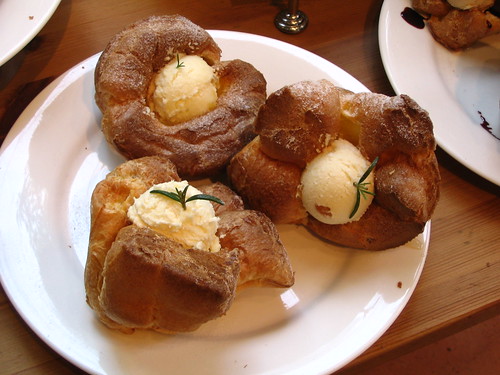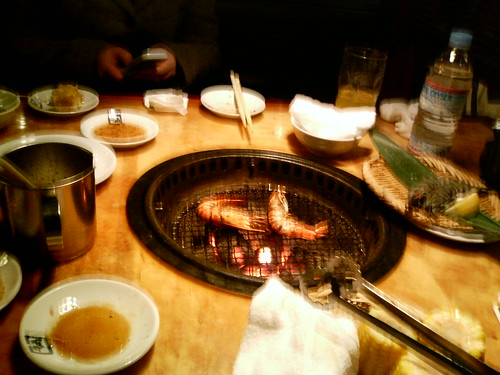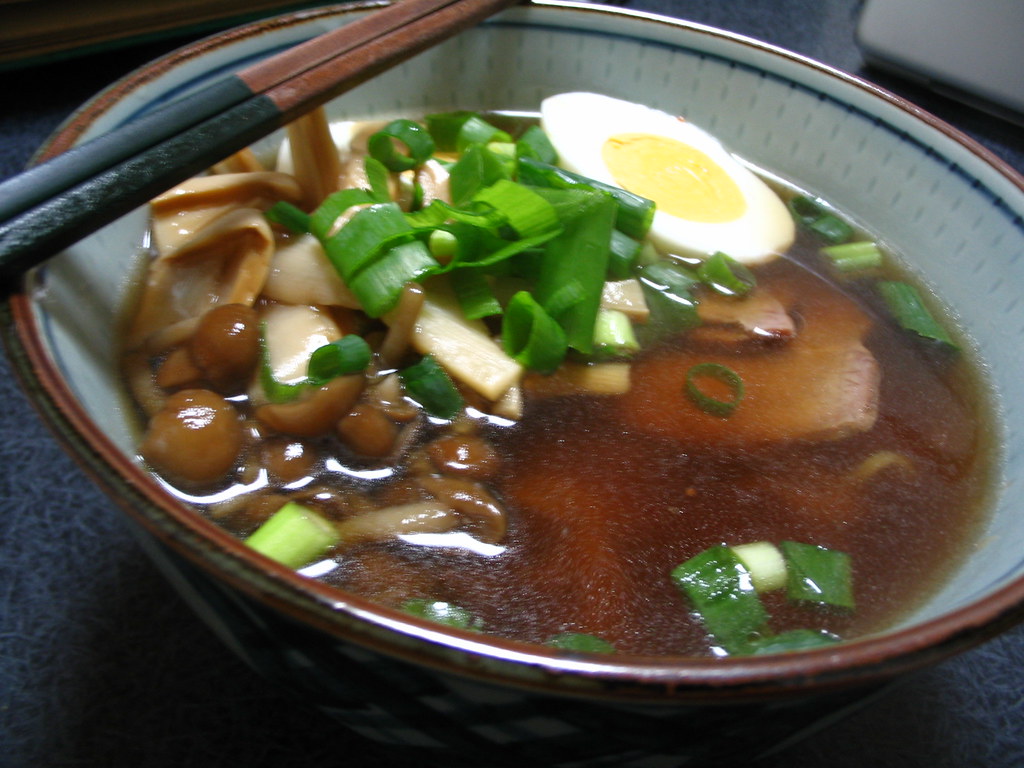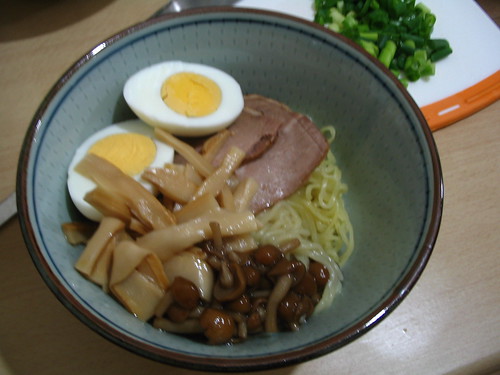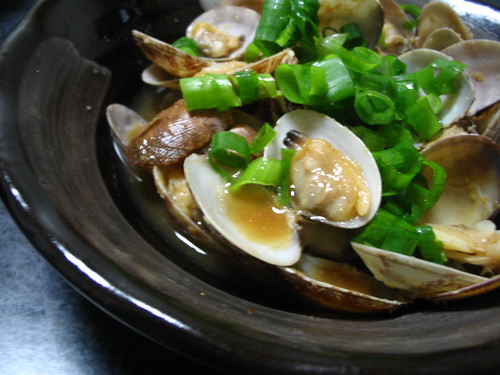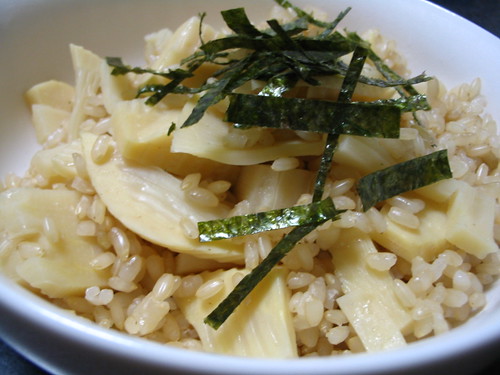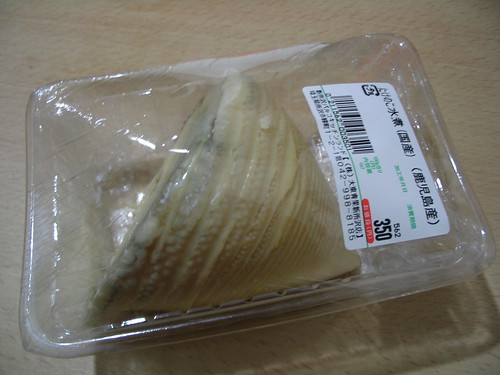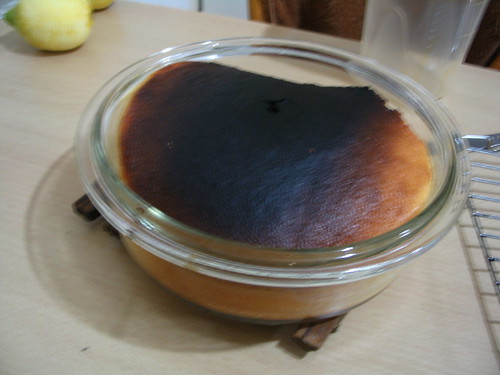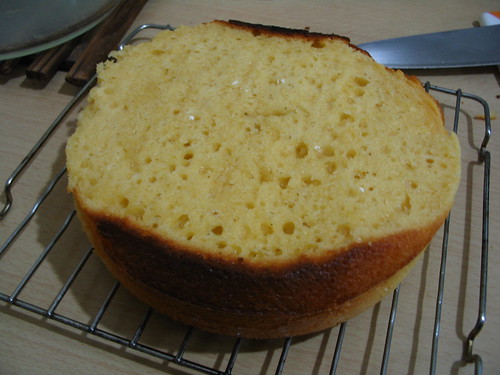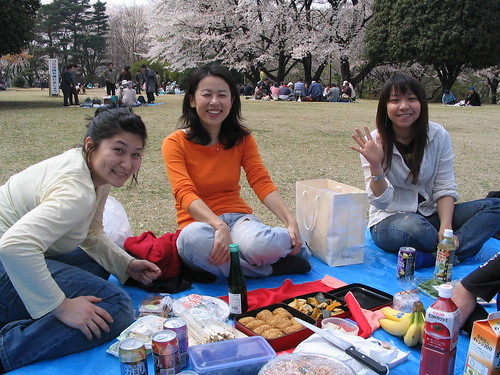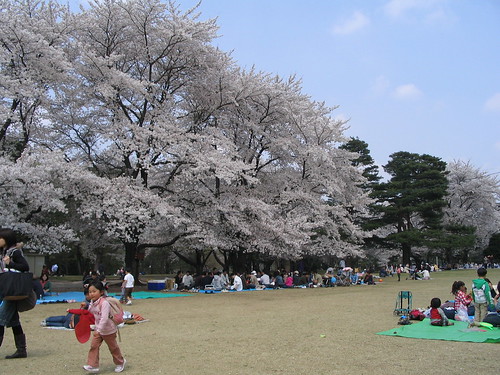"A-I-U-E-Onigiri!" - おにぎり

"A-I-U-E-Onigiri!" - so goes the happy tune the onigiri case at my supermarket plays on loop, and so goes my head now that I've started thinking about onigiri. Over and over and over again.
Onigiri (also known as omusubi) are a packed lunch and conbini staple, easily over-throwing that western champion, the sandwich, as Convenience Food #1. Just like the sandwich they're easy to wrap and carry, no heating or cutlery is required and you can buy them almost anywhere, with a huge variety of fillings, for around $1.50. Plus, they're made of rice. The sandwich never stood a chance.
There are a million and one guides to making onigiri on the web, using moulds, your hands or plastic wrap to pack and shape them. I usually use a plastic mould I bought at a local kitchenware store for around 200yen but the top has gotten lost somewhere in the flurry of hanami packing and unpacking.
This seemed like a good chance to read up on different techniques and go it alone. After a bit of research, I went with Maki's plastic wrap method and my memories of our swift-fingered riceball vendor in Taipei. I also found some step by step photos for using a mould or hand shaping here.
A cup of uncooked rice and a small salmon fillet, grilled and flaked, gave me four nicely sized onigri and a handful of leftover rice. You could probably get 6 onigiri with more fillings, or make some plain ones. I also tried sprinkling one of the onigiri with furikake - packets of flakes for flavoring cooked rice. In the past I'd mixed a little into the rice mixture before forming the balls, which added a nice salty touch, but I kept seeing photos of pretty onigiri coated in sprinkles or patterns. Blehgh. To me it was too salty and totally overpowered the salmon in the middle. Perhaps everyone else is using a milder kind of furikake.
Anyway, over seasoning aside, the instructions were really easy to follow and produced some delicious onigiri. The next day I put the leftovers in the fry pan until the sides were browned and called it yaki-onigiri.
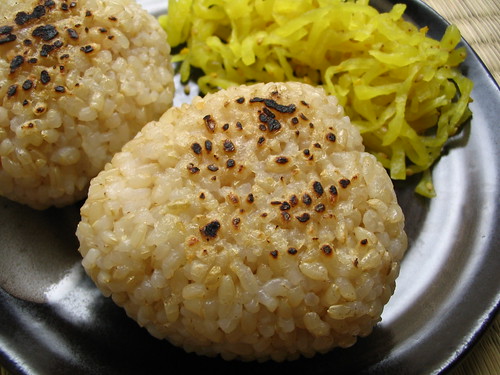
Mmmmm, warm and crunchy. Yaki-onigiri are usually basted with a little soy sauce and grilled, and they're a great side to order at a yakitori place when you're drowning in meat.
I'll probably buy another mould, if only so as not to waste plastic wrap, but it's good to know that even my uncoordinated hands can shape an onigiri without one. There are no excuses now.
(For some impossibly cute onigiri presentation ideas, try a search for onigiri on flick: hearts, faces, hello kitty, and blue ones!)


